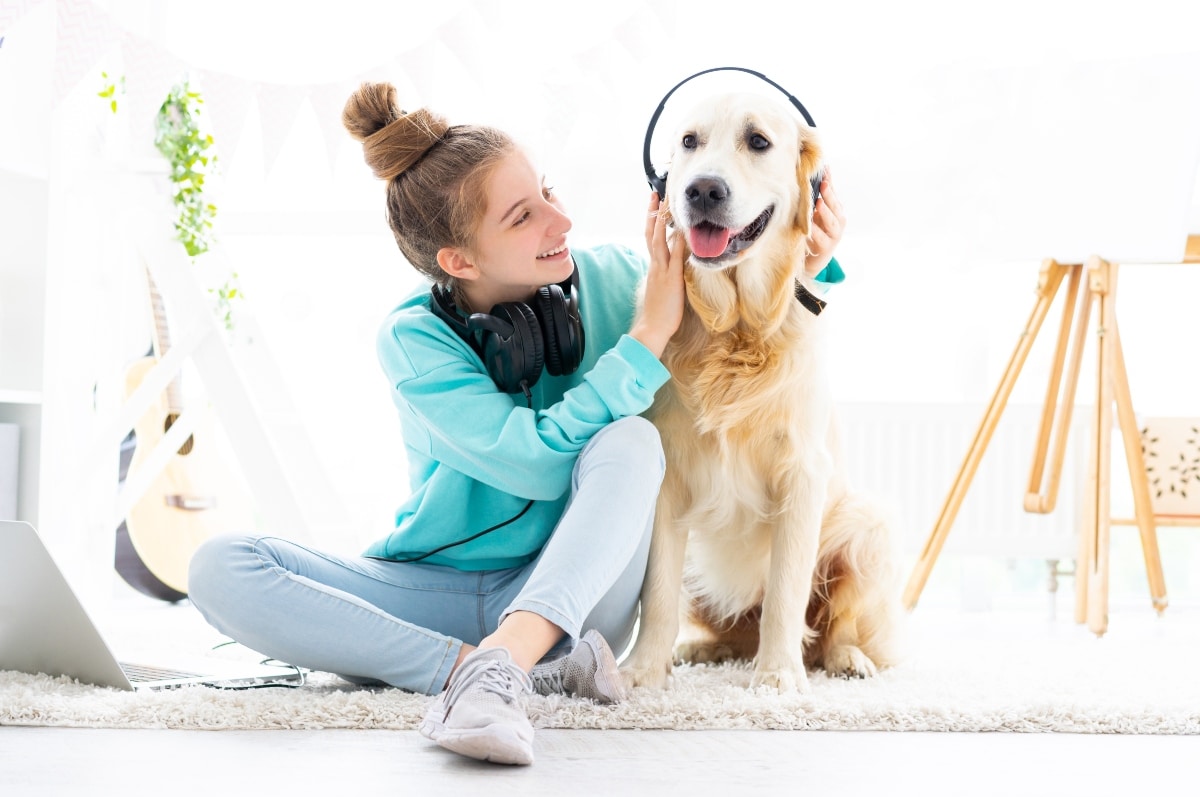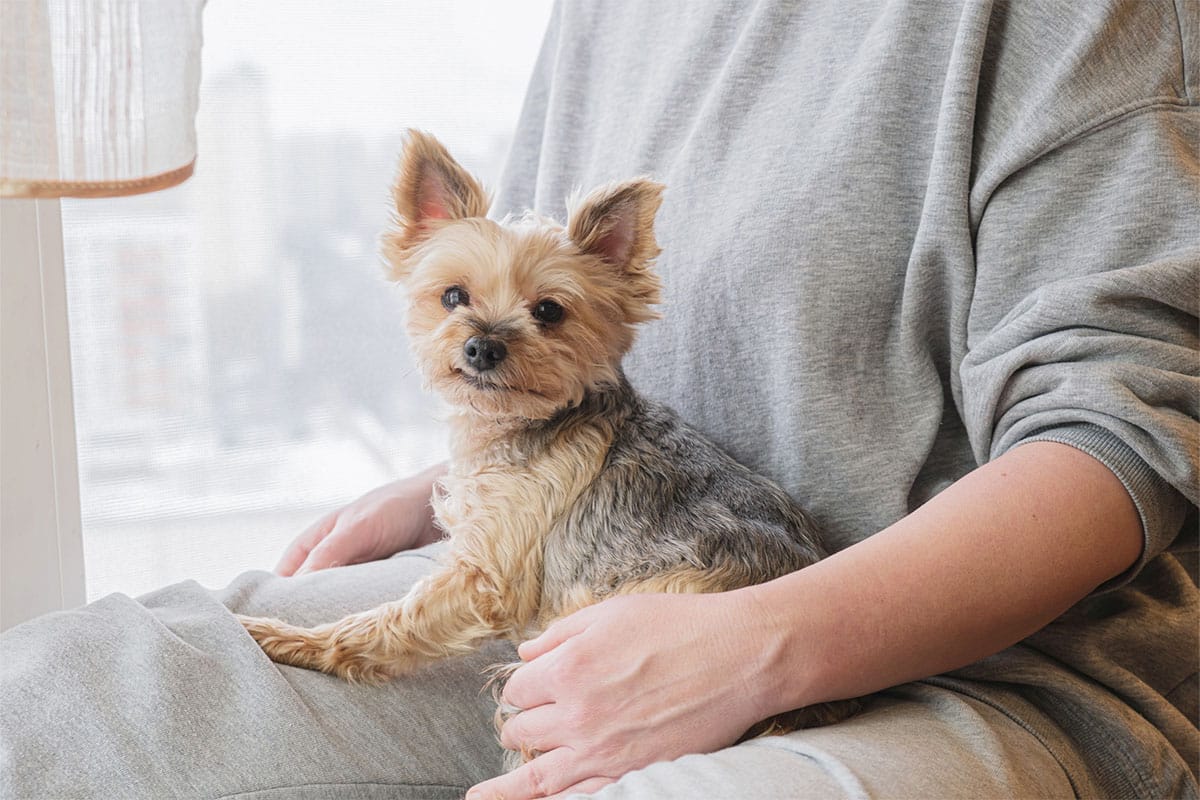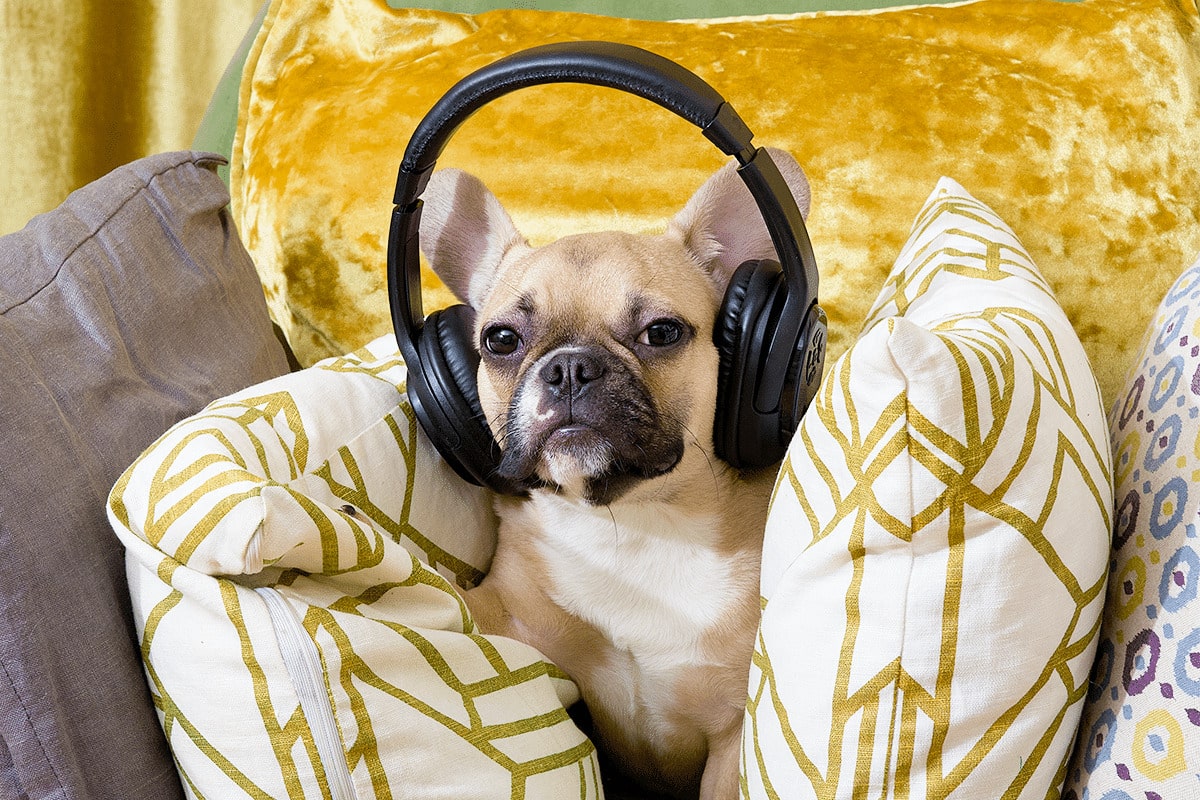
Check out our latest products
Shutterstock
Music affects dogs more than most people realize—and not just because they’re stuck listening to your questionable playlist choices. Dogs react to different tones, rhythms, and genres in unique ways, often reflecting their mood, energy level, or just how much they trust you as a DJ. From calming classical to anxiety-inducing metal, what you play can influence how they behave, rest, or even howl along. While they may not judge your taste in music (out loud), dogs can show clear preferences and reactions that are as entertaining as they are insightful.
Classical Music Can Soothe Stressed-Out Dogs

Shutterstock
When dogs hear classical music, especially slower tempos and string-heavy compositions, their stress levels often go down. Studies have shown that classical music helps lower heart rates and reduces barking in shelter dogs and pets with anxiety. The melodies create a peaceful atmosphere, making it a great background choice during car rides, vet visits, or thunderstorm meltdowns. So the next time your dog looks like it’s experiencing a minor existential crisis, try some Chopin.

Shutterstock
While heavy metal can be an energy booster for people, it tends to stress dogs out. The loud volume, fast tempo, and aggressive tones often lead to increased barking, pacing, or nervous behaviors. It’s not uncommon for dogs to retreat to another room when metal is blasting, ears back and tail tucked. Basically, if you’re headbanging, your dog might be thinking, “Please make it stop.” Save the shredding for when they’re out of earshot.
Dogs Can Have Genre Preferences

Shutterstock
Not all dogs react the same way to every genre. Some might love reggae, while others settle down to soft jazz or acoustic folk. Observant owners often find that their dogs consistently respond more positively to certain types of music. Like humans, dogs appear to favor sounds that match their personality or current mood. So if your dog seems to perk up when you put on Fleetwood Mac, don’t question it—just hit repeat.
Singing to Your Dog Can Strengthen Your Bond

Shutterstock
Dogs may not care whether you’re pitch-perfect, but they do love the sound of your voice. Singing to your dog can help reinforce your bond, as your voice has a naturally calming effect, especially if it’s rhythmic and melodic. Some dogs will even nuzzle closer or relax when their humans hum or sing. You might feel silly serenading your pup, but in their eyes, you’re Beyoncé. Without the backup dancers.
High-Pitched Singing Can Trigger Howling

Shutterstock
If you’ve ever broken into a high note and your dog joined in with a howl, you’re not alone. Dogs are naturally inclined to respond to high-pitched sounds with howling, as it mimics their ancestral communication. Operatic performances, harmonicas, or your enthusiastic rendition of Mariah Carey can sometimes trigger a musical duet. Whether they’re harmonizing or trying to shut you up remains unclear, but it’s undeniably adorable.
Reggae and Soft Rock Are Fan Favorites

Shutterstock
Studies show that reggae and soft rock consistently top the charts for canine approval. These genres feature steady rhythms and mellow tones that help calm anxiety and promote relaxation. Dogs listening to reggae tend to bark less, move around less, and appear more at ease overall. So if you want to help your dog unwind, Bob Marley may do the trick better than a squeaky toy ever could.
Dogs Notice Changes in Volume and Tempo

Shutterstock
Dogs are incredibly sensitive to shifts in sound, especially changes in volume and speed. Sudden tempo changes or loud crescendos can startle them or make them feel uneasy. On the other hand, slow, consistent tempos are more likely to encourage relaxation. This sensitivity means background music should stay steady and not mimic an action-movie soundtrack—unless you want your dog to treat every scene like a chase sequence.
Some Dogs Will “Dance” to Music

Shutterstock
Certain dogs may sway, bounce, or even spin when they hear upbeat music. While this isn’t true dancing in the human sense, these movements are often responses to excitement, rhythm, or cues from their owners. High-energy breeds like Boxers or Poodles may seem especially “dancey” when the beat drops. Whether it’s choreography or chaos, it’s clear music can turn some dogs into living-room performers.
Music Can Help Puppies Adjust to New Homes

Shutterstock
Moving into a new environment can be overwhelming for puppies, but calming music can ease the transition. Playing gentle tunes in the background helps mask unfamiliar noises and provides a soothing atmosphere. This reduces crying, helps with sleep, and makes the adjustment smoother for everyone involved. Think of it as the puppy playlist version of comfort food—except less messy.
White Noise and Ambient Tracks Can Ease Separation Anxiety

Shutterstock
If your dog struggles when left alone, ambient soundtracks or white noise paired with calming music can help reduce anxiety. These sounds mimic a comforting presence and block out jarring outdoor noises like car horns or doorbells. When used consistently, they create a relaxing routine that your dog can associate with safety and rest. Bonus: it also helps drown out their dramatic sighs of abandonment.
Dogs React More to Music Played Live

Shutterstock
Live music often captures a dog’s attention more than recordings, possibly because it includes subtle cues and variations that are more engaging. Dogs may cock their heads, move closer, or even lay down near someone singing or playing an instrument. Your live ukulele performance might seem minor to humans, but your dog sees it as a front-row concert, possibly with treats after. Dogs: the best audience and toughest critics.
Music Therapy Is Used in Veterinary Settings

Shutterstock
Veterinarians and animal shelters have started using music therapy to calm dogs during stressful procedures or long shelter stays. Playing calming tunes during exams or grooming can make dogs more relaxed and cooperative. Classical or acoustic music is often the go-to, and it can turn a vet visit from “mild panic” to “meh, I’ll tolerate this.” It’s the dog equivalent of spa music, minus the cucumber water.
Puppies May Respond Differently Than Adults

Shutterstock
Puppies often have shorter attention spans and more energy, so their reactions to music can differ from adult dogs. While adult dogs may be soothed by a lullaby-like playlist, puppies might perk up or want to play. Over time, their musical preferences may change, much like humans going from chaotic toddler tunes to chill adult playlists. Yes, even dogs go through a phase.
Music Can Distract From Loud Noises

Shutterstock
Dogs that fear thunder or fireworks may benefit from music played during storms or celebrations. The right music can serve as a comforting distraction, masking jarring noises and reducing panic responses. While it won’t eliminate fear entirely, it offers an effective layer of comfort when paired with other calming techniques. So next time the skies roar, crank up the soothing sounds—your pup’s nerves will thank you.
You Might Be Creating Your Dog’s Favorite Playlist

Shutterstock
Your dog may already associate your go-to playlist with positive experiences like snuggles, meals, or playtime. Over time, this creates a preference, and they may show excitement or relaxation when they hear familiar songs. Whether it’s Taylor Swift or Norah Jones, they’re building an emotional connection to your soundtrack. Just don’t be surprised if they leave the room when you switch to screamo.
The Paw-dience Is Listening

Shutterstock
Whether your dog is a classical connoisseur, a reggae ruffian, or a howling backup vocalist, their response to music says a lot about how they feel—and how they feel about your taste. With the right playlist, you can turn belly scratches into symphonies and crate time into a chill concert. So next time you queue up a track, remember: those floppy ears are tuned in, the tail might be on tempo, and you just might be living with a secret music critic in fur.







![[5G & 2.4G] 2K Indoor Security Camera for Home Security, AI Voice Change for 2-Way Talk, Motion Detection, Night Vision, 24/7 SD Recording/Cloud Storage, WiFi Home Camera, Pet Cam with Phone App](https://i3.wp.com/m.media-amazon.com/images/I/61I2U+sTT3L._AC_SL1500_.jpg?w=300&resize=300,300&ssl=1)






